
- Subject:
- Psychology
- Social and Behavioral Sciences
- Provider:
- Rice University
- Provider Set:
- OpenStax College

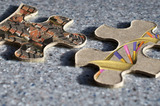
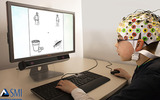
By the end of this section, you will be able to:Explain the functions of the spinal cordIdentify the hemispheres and lobes of the brainDescribe the types of techniques available to clinicians and researchers to image or scan the brain
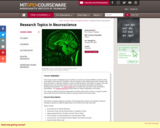
This series of research talks by members of the Department of Brain and Cognitive Sciences introduces students to different approaches to the study of the brain and mind. Topics include: "From Neurons to Neural Networks" "Prefrontal Cortex and the Neural Basis of Cognitive Control" "Hippocampal Memory Formation and the Role of Sleep" "The Formation of Internal Modes for Learning Motor Skills" "Look and See: How the Brain Selects Objects and Directs the Eyes" "How the Brain Wires Itself"
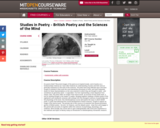
Extensive reading of works by a few major poets. Emphasizes the evolution of each poet's work and the questions of poetic influence and literary tradition. Instruction and practice in oral and written communication. Topic for Fall: Does Poetry Matter? Topic for Spring: Gender and Lyric Poetry.
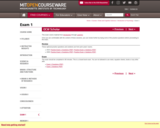
Test Banks 1 out of 3 for (Stangor & Walinga text; MIT Open Courseware). Topics include: Introduction to Psychology, Science and Research of Psychology, Brain Structure, Brain Function, Methods of Brain Research, Vision, Consciousness, Attention, Memory, and Learning. Questions formats include multiple choice, short answer, fill in the blank, anatomical identification, short essay,

Test Banks 2 out of 3 for (Stangor & Walinga text; MIT Open Courseware). Topics include: Memory, Learning, Language, Thinking, Intelligence, and emotion and motivation. Questions formats include multiple choice, short answer, fill in the blank, anatomical identification, short essay,
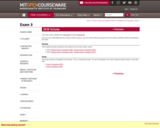
Test Banks 3 out of 3 for (Stangor & Walinga text; MIT Open Courseware) Topics include: Personality, Child Development, Adult Development, Stress, Psychopathology, Social Psychology, Evolutionary Psychology, and Happiness. Questions formats include multiple choice, short answer, fill in the blank, anatomical identification, short essay,
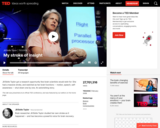
Jill Bolte Taylor got a research opportunity few brain scientists would wish for: She had a massive stroke, and watched as her brain functions — motion, speech, self-awareness — shut down one by one. An astonishing story.

Electroencephalography, or EEG, is a technique used to measure the electrical activity of the brain. In this video, I discuss the basics of EEG like what it measures, how it’s used, and some strengths and limitations.
Duration: 2:00.
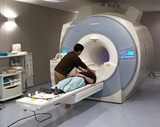
Functional magnetic resonance imaging, or fMRI, is a popular neuroimaging method that enables us to obtain images of brain activity. In this video, I discuss how fMRI works, what is represented in a typical fMRI image, and some of the methodological problems associated with the use of fMRI.
Duration: 1:59.

Long-term potentiation, or LTP, is a process by which connections between neurons become stronger with frequent activation. LTP is thought to be a way in which the brain changes in response to experience, and thus may be an mechanism underlying learning and memory. In this video, I discuss one type of LTP: NMDA-receptor dependent LTP. I outline the mechanism underlying NMDA-receptor LTP and describe how it is thought to strengthen synaptic connections where it occurs.
Duration: 1:59.
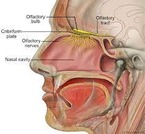
Olfaction is another word for the sense of smell. In this video, I summarize the process of olfaction beginning with the olfactory receptors found in the olfactory epithelium. I follow the path of olfactory information until it reaches the olfactory cortex, where most olfactory processing in the brain occurs.
Duration: 1:59.

In this video, I discuss the sense of taste and follow the path of taste information from the tongue to the gustatory cortex.
Duration: 1:57.
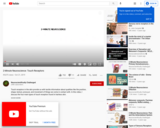
Touch receptors in the skin provide us with tactile information about qualities like the position, shape, texture, pressure, and movement of things we come in contact with. In this video, I discuss the four main types of touch receptors found in hairless skin.
Duration: 1:59.

The vestibular system is a sensory system that is essential to normal movement and equilibrium. In this video, I discuss the vestibular labyrinth---the primary structure of the vestibular system, which consists of the semicircular canals, ampullae, and otolith organs. All of these are essential to the vestibular system's ability to provide the brain with information about things like motion, head position, and spatial orientation.
Duration: 1:55.
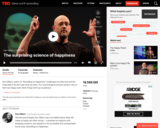
Dan Gilbert, author of "Stumbling on Happiness," challenges the idea that we'll be miserable if we don't get what we want. Our "psychological immune system" lets us feel truly happy even when things don't go as planned.

We used to think that the human brain was a lot like a computer; using logic to figure out complicated problems. It turns out, it's a lot more complex and, well, weird than that. In this episode of Crash Course Psychology, Hank discusses thinking & communication, solving problems, creating problems, and a few ideas about what our brains are doing up there.
--
Table of Contents
Thinking & Communicating 01:39:16
Solving Problems 03:21:03
Creating Problems 05:46:06
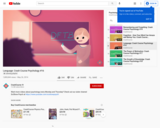
You know what's amazing? That we can talk to people, they can make meaning out of it, and then talk back to us. In this episode of Crash Course Psychology, Hank talks to us and tries to make meaning out of how our brains do this thing called Language. Plus, monkeys!
--
Table of Contents
Phonemes, Morphemes, Grammar 01:48:13
Receptive and Productive Language 03:22:06
Babbling 03:55:22
How We Acquire Language 05:50:22
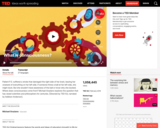
Patient P.S. suffered a stroke that damaged the right side of her brain, leaving her unaware of everything on her left side. If someone threw a ball at her left side, she might duck. But she wouldn't have awareness of the ball or know why she ducked. Where does consciousness come from? Michael Graziano explores the question that has vexed scientists and philosophers for centuries. [Directed by TED-Ed, narrated by Addison Anderson]. Duration: 4:56.